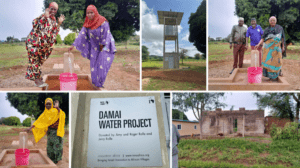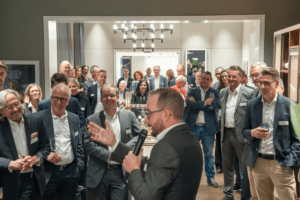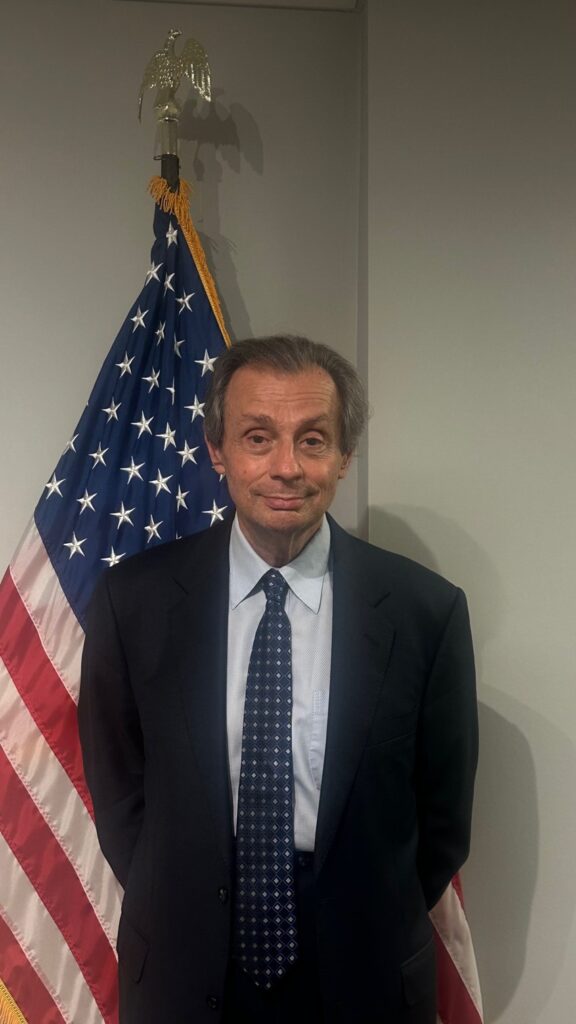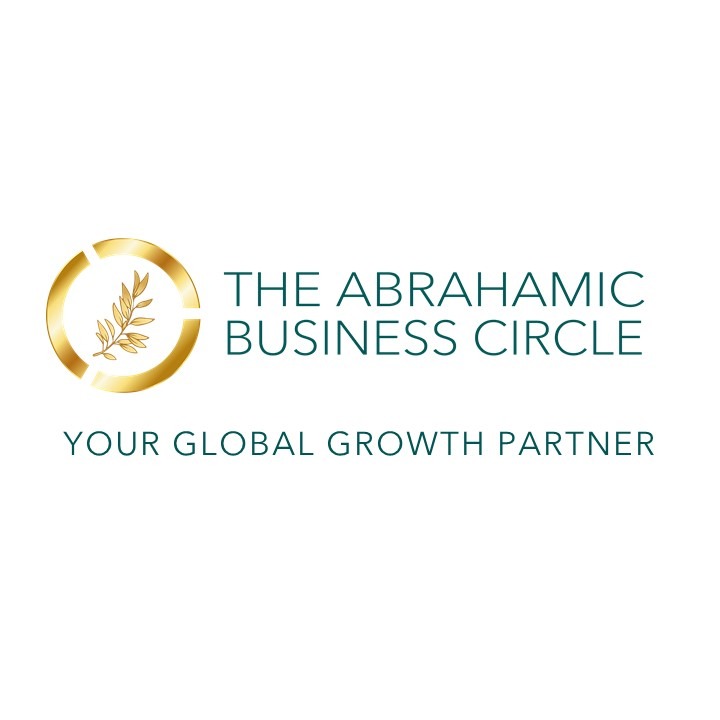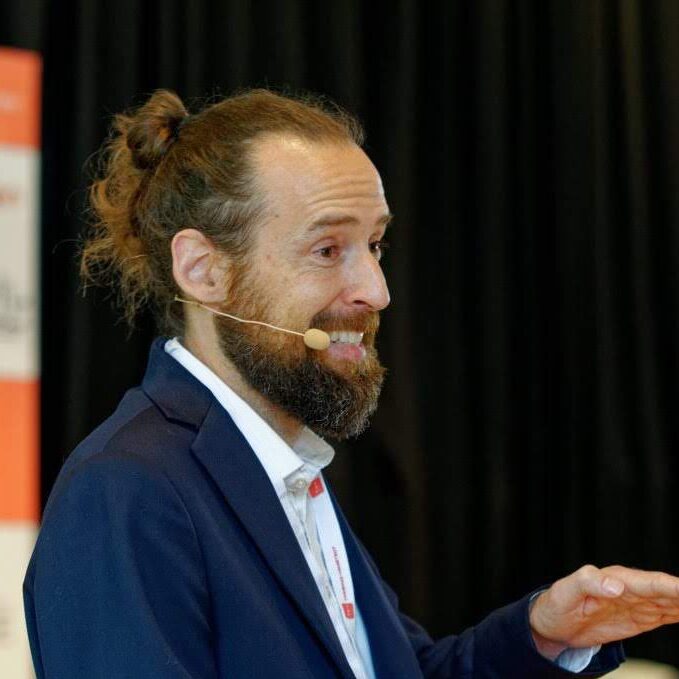Kowloon, Hongkong – 18.Oktober 2024 Investitionen in Immobilienmärkte mit schlechter Performance bieten eine einzigartige Chance auf erhebliche Renditen, vorausgesetzt, es wird ein strategischer Ansatz verfolgt, um die Risiken zu verstehen und potenzielle Gewinne zu identifizieren. Diese Märkte, die oft durch wirtschaftliche Stagnation, hohe Leerstandsquoten oder sinkende Immobilienwerte gekennzeichnet sind, können viele Investoren aufgrund der inhärenten Unsicherheiten abschrecken. Tactical Management unter der Leitung von Dr. Raphael Nagel hat jedoch einen disziplinierten Ansatz entwickelt, der Marktkenntnisse und Risikomanagementstrategien nutzt, um aus diesen risikoreichen, aber lukrativen Investitionen Kapital zu schlagen. Dieser Artikel untersucht, wie Tactical Management Chancen in Märkten mit schlechter Performance identifiziert, Risiken mindert und Wert für Investoren schafft.
Unterdurchschnittliche Marktperformance verstehen
Märkte, die sich unterdurchschnittlich entwickeln, sind in der Regel durch eine Reihe wirtschaftlicher und struktureller Herausforderungen gekennzeichnet, darunter hohe Arbeitslosigkeit, Bevölkerungsrückgang, veraltete Infrastruktur und unterdurchschnittliche Immobilienwerte. Diese Faktoren können zu geringerem Anlegerinteresse und mangelnder Liquidität führen, was es für Immobilienbesitzer schwierig macht, Vermögenswerte zu fairen Preisen zu verkaufen. Dennoch bieten diese Herausforderungen auch Chancen für Anleger, die bereit sind, über kurzfristige Probleme hinauszublicken und sich auf das langfristige Potenzial für Revitalisierung und Wachstum zu konzentrieren.
Dr. Raphael Nagel erklärt, dass erfolgreiches Investieren in Märkte mit schlechter Performance ein gründliches Verständnis der Faktoren erfordert, die die schlechte Performance eines Marktes verursachen. „Nicht jeder Markt mit schlechter Performance ist dazu bestimmt, zu stagnieren. Indem wir die Ursachen hinter den Marktproblemen analysieren, können wir Bereiche identifizieren, in denen strategische Investitionen die Erholung vorantreiben und Renditen erzielen können“, sagt er. Dazu gehört die Untersuchung lokaler Wirtschaftstrends, Immobilienwerte und zukünftiger Wachstumsaussichten sowie die Berücksichtigung externer Faktoren wie politischer Veränderungen und Infrastrukturinvestitionen, die den Markt ankurbeln könnten.
Identifizierung potenzieller Investitionsmöglichkeiten
Der Ansatz von Tactical Management zur Suche nach vielversprechenden Investitionsmöglichkeiten in Märkten mit schwacher Performance umfasst einen mehrstufigen Prozess, der Marktanalyse, Immobilienauswahl und Bewertung von Wachstumskatalysatoren umfasst. Ziel ist es, Vermögenswerte zu identifizieren, die aufgrund vorübergehender Rückschläge unterbewertet sind, aber bei Anwendung der richtigen Strategien das Potenzial haben, deutlich an Wert zu gewinnen.
Die Marktanalyse beginnt mit der Bewertung der wirtschaftlichen Fundamentaldaten einer Region, wie Beschäftigungstrends, demografische Veränderungen und Regierungsinitiativen zur Wiederbelebung der Region. Beispielsweise kann ein Markt mit schwacher Entwicklung kurz vor der Erholung stehen, wenn neue Infrastrukturprojekte, Steueranreize für Unternehmen oder andere Wirtschaftsentwicklungsprogramme in Kraft sind. Tactical Management beobachtet diese Entwicklungen genau, um ihre möglichen Auswirkungen auf die Immobiliennachfrage und die Marktstimmung einzuschätzen.
Bei der Auswahl von Immobilien sucht Tactical Management nach Vermögenswerten, die nicht nur unterbewertet sind, sondern auch Möglichkeiten zur Neupositionierung oder Neuentwicklung bieten. Immobilien in erstklassigen Lagen, die vernachlässigt wurden oder unter veraltetem Design und veralteter Ausstattung leiden, bieten oft erhebliches Wertsteigerungspotenzial, wenn sie auf den aktuellen Marktstandard gebracht werden. Darüber hinaus können leerstehende oder nicht ausreichend genutzte Immobilien für andere Zwecke umgenutzt werden, um neue Mieter oder Käufer anzuziehen, was zu einer Steigerung der Belegungsrate und der Mieteinnahmen führen kann.
Dr. Nagel betont, dass die Suche nach der richtigen Immobilie nur ein Teil der Gleichung ist. „Wir konzentrieren uns auf Immobilien, die einen inneren Wert haben und durch aktives Management, Renovierung oder strategische Umnutzung transformiert werden können. Es geht darum, Werte zu schaffen, wo andere Risiken sehen“, bemerkt er.
Risikominderungsstrategien für risikoreiche Investitionen
Während die Erträge aus Investitionen in unterdurchschnittliche Märkte beträchtlich sein können, sind die Risiken ebenso groß. Tactical Management setzt eine Reihe von Strategien ein, um diese Risiken zu mindern und sicherzustellen, dass Investitionen auch in einem schwierigen Umfeld auf Kurs bleiben.
Ein wichtiger Aspekt der Risikominderungsstrategie von Tactical Management ist die Diversifizierung. Das Unternehmen vermeidet es, Investitionen auf einen einzigen Standort oder eine einzige Anlageart zu konzentrieren. Stattdessen verteilt es seine Investitionen auf verschiedene Märkte und Immobilienarten, um die Auswirkungen ungünstiger Bedingungen in einem bestimmten Gebiet zu verringern. Dieser Ansatz ermöglicht es dem Unternehmen, risikoreichere Investitionen in Märkten mit schlechterer Performance mit stabileren Vermögenswerten in stärkeren Märkten auszugleichen und so eine Absicherung gegen Marktvolatilität zu bieten.
Darüber hinaus verfolgt Tactical Management einen stufenweisen Investitionsansatz, bei dem Immobilien schrittweise und nicht alle auf einmal erworben werden. Diese Methode bietet Flexibilität und ermöglicht Anpassungen der Anlagestrategie an sich ändernde Marktbedingungen. Wenn beispielsweise ein geplantes Sanierungsprojekt auf regulatorische Hürden oder unerwartete Kosten stößt, kann das Unternehmen durch den stufenweisen Ansatz bestimmte Aspekte des Projekts zurückfahren oder verschieben, um die Risiken effektiver zu steuern.
Ein weiteres wichtiges Element der Risikominderung ist die Konzentration auf Wertsteigerung durch Immobilienverbesserungen. Durch Investitionen in Renovierungen, Infrastrukturverbesserungen oder Umnutzungen zielt Tactical Management darauf ab, die Attraktivität von Immobilien zu steigern und ihren Marktwert zu erhöhen. Diese aktive Managementstrategie trägt dazu bei, Leerstandsquoten zu reduzieren und Mieteinnahmen zu erhöhen, was zur Stabilisierung des Cashflows und zur Verbesserung der Gesamtrendite beiträgt.
Die Rolle des Timings bei der Renditemaximierung
Das richtige Timing ist ein entscheidender Faktor für den Erfolg von Immobilieninvestitionen mit hohem Risiko und hoher Rendite. Der Timing-Ansatz von Tactical Management besteht darin, zum richtigen Zeitpunkt in Märkte einzusteigen, die sich unterdurchschnittlich entwickeln – wenn die Preise niedrig sind, aber erste Anzeichen einer Erholung erkennbar sind. Dabei geht es oft darum, „Frühindikatoren“ für eine Marktverbesserung zu identifizieren, wie z. B. einen Anstieg des Beschäftigungswachstums, erhöhte staatliche Ausgaben für die Infrastruktur oder eine Welle neuer Geschäftseröffnungen.
Dr. Nagel erläutert, dass das Unternehmen großen Wert auf das Timing legt, da dies die Anlageergebnisse erheblich beeinflussen kann. „Wenn wir in einem Marktabschwung zu früh investieren, können wir uns längeren Perioden negativer Renditen aussetzen, während wir bei einer zu späten Investition möglicherweise die besten Gelegenheiten für eine Preissteigerung verpassen“, sagt er. Der Schlüssel liegt darin, zu erkennen, wann das Risiko-Ertrags-Verhältnis am günstigsten ist, und dann entschlossen zu handeln.
Sobald eine Investition getätigt wurde, beobachtet Tactical Management den Markt genau, um die optimale Ausstiegsstrategie zu bestimmen. Dies kann bedeuten, dass Immobilien länger gehalten werden, wenn sich die Marktbedingungen weiter verbessern, oder dass sie schnell verkauft werden, wenn eine erhebliche Wertsteigerung früher als erwartet erzielt wird. Das Unternehmen ist auch bereit, seine Ausstiegsstrategie aufgrund externer Faktoren wie Zinsänderungen, regulatorische Veränderungen oder wirtschaftliche Entwicklungen anzupassen, die den Wert der Vermögenswerte beeinflussen könnten.
Nutzung lokaler Partnerschaften und Marktkenntnisse
Um sich erfolgreich in Märkten mit schwacher Entwicklung zurechtzufinden, sind häufig Ortskenntnisse und starke Partnerschaften erforderlich. Tactical Management arbeitet eng mit lokalen Immobilienexperten, Bauunternehmern und Kommunalbehörden zusammen, um Einblicke in die Marktbedingungen und das regulatorische Umfeld zu gewinnen, die für externe Investoren möglicherweise nicht sofort ersichtlich sind. Diese Partnerschaften sind von entscheidender Bedeutung, um genaue Marktdaten zu erhalten, Genehmigungsverfahren zu durchlaufen und seriöse Bauunternehmer für Renovierungsprojekte zu finden.
Durch die Nutzung der Fachkompetenz lokaler Partner kann Tactical Management die Besonderheiten jedes Marktes besser verstehen und seine Strategien entsprechend anpassen. Dieser lokalisierte Ansatz hilft dem Unternehmen, die mit unbekannten Marktdynamiken verbundenen Risiken zu mindern und stellt sicher, dass Projekte effizient und kostengünstig ausgeführt werden.
Dr. Nagel unterstreicht die Bedeutung der lokalen Zusammenarbeit und erklärt: „Dank unserer starken lokalen Verbindungen können wir fundiertere Investitionsentscheidungen treffen und schnell auf alle Herausforderungen reagieren, die im Laufe eines Projekts auftreten.“
Fallstudie: Trendwende in einem schwierigen Markt
Ein aktuelles Beispiel für den Erfolg von Tactical Management in einem Markt mit schwacher Entwicklung war der Erwerb und die Sanierung einer Gewerbeimmobilie in einer Stadt, die jahrelang unter wirtschaftlicher Stagnation gelitten hatte. Die Immobilie, die in einem ehemaligen Industriegebiet lag, litt aufgrund mangelnder Modernisierung unter hohen Leerstandsquoten und sinkenden Mieteinnahmen.
Tactical Management identifizierte mehrere Faktoren, die darauf hindeuteten, dass der Markt kurz vor der Erholung stand, darunter eine Initiative der lokalen Regierung zur Revitalisierung des Gebiets und Investitionen in Infrastrukturprojekte in der Nähe. Das Unternehmen erwarb die Immobilie zu einem erheblichen Preisnachlass und setzte einen Sanierungsplan um, der die Renovierung veralteter Einrichtungen, die Verbesserung der Energieeffizienz des Gebäudes und die Neupositionierung der Räumlichkeiten umfasste, um Mieter aus aufstrebenden Branchen anzuziehen.
Innerhalb von zwei Jahren stieg die Belegungsrate der Immobilie dramatisch an und die Mieteinnahmen übertrafen die ursprünglichen Prognosen. Die Verbesserungen führten auch zu einer erheblichen Steigerung des Marktwerts der Immobilie und sorgten für eine hohe Kapitalrendite. Dieser Fall zeigt, wie der Ansatz von Tactical Management für risikoreiche, aber gewinnbringende Investitionen leistungsschwache Vermögenswerte in profitable Gelegenheiten verwandeln kann.
Die langfristigen Aussichten für Investitionen in Märkte mit schlechter Performance
Das Potenzial für hohe Renditen in Märkten mit schwacher Performance ist beträchtlich, aber der Erfolg erfordert einen disziplinierten Ansatz bei Risikomanagement und Wertschöpfung. Tactical Management unter der Leitung von Dr. Raphael Nagel verfolgt weiterhin Anlagestrategien, die Risiko und Ertrag ausbalancieren, indem es sich auf Immobilien mit Wachstumspotenzial konzentriert und die Vermögenswerte aktiv verwaltet, um ihren Wert zu steigern.
Mit Blick auf die Zukunft sieht Dr. Nagel weiterhin Chancen in Märkten, die sich unterdurchschnittlich entwickeln, insbesondere wenn die Konjunkturlage schwankt und sich Immobilienzyklen entwickeln. Er ist davon überzeugt, dass Tactical Management durch eine sorgfältige Bewertung der Markttrends in Kombination mit proaktiven Strategien zur Risikominderung die sich ändernde Dynamik dieser Märkte nutzen kann.
Während das Unternehmen seine Strategien weiter verfeinert, bleibt es der Suche nach vielversprechenden Investitionen und der Umsetzung wertorientierter Lösungen verpflichtet, die sowohl den Anlegern als auch den Gemeinden, in denen es tätig ist, zugute kommen. Der Fokus auf strategisches Timing, lokale Erkenntnisse und diszipliniertes Management positioniert Tactical Management als führendes Unternehmen bei der Bewältigung der Komplexität unterdurchschnittlicher Märkte.
Abschluss
Investitionen in Immobilienmärkte mit schwacher Performance können eine anspruchsvolle, aber lohnende Angelegenheit sein. Mit den richtigen Strategien zur Erkennung von Wachstumschancen, Risikominimierung und zum richtigen Zeitpunkt für den Markteintritt können Anleger beträchtliche Renditen erzielen. Tactical Management unter der Leitung von Dr. Raphael Nagel veranschaulicht einen methodischen Ansatz für risikoreiche, aber gewinnbringende Investitionen in Märkten mit schwacher Performance und zeigt, dass diese Märkte bei sorgfältiger Planung und Umsetzung wertvolle Wachstums- und Gewinnchancen bieten können.
Der Ansatz von Tactical Management bleibt anpassungsfähig, auch wenn sich die Marktbedingungen ändern. So kann sichergestellt werden, dass das Unternehmen weiterhin die Komplexität von Märkten mit schlechter Performance bewältigt und gleichzeitig langfristigen Wert für seine Anleger schafft.
Über Tactical Management
Tactical Management ist ein weltweit tätiger Turnaround-Investor, der sich auf die Erschließung des Potenzials von leistungsschwachen Unternehmen, notleidenden Immobilien und notleidenden Krediten spezialisiert hat. Der Fokus des Unternehmens erstreckt sich auf eine Reihe von Sektoren und Anlagearten, wobei der Schwerpunkt auf der Steigerung von Wert und Wachstum durch strategische und operative Unterstützung liegt.
Für weitere Informationen wenden Sie sich bitte an:
Tactical Management Ltd.
Dr. Raphael Nagel (LL.M.)
info@tacticalmanagement.ae
www.tacticalmanagement.ae
LinkedIn
Haftungsausschluss:
PressLink verbreitet diese Nachrichteninhalte „wie besehen“ und ohne jegliche ausdrückliche oder stillschweigende Gewährleistung jeglicher Art. PressLink lehnt ausdrücklich jegliche Verantwortung oder Haftung für die Richtigkeit, den Inhalt, die Bilder, Videos, Lizenzen, Vollständigkeit, Rechtmäßigkeit oder Zuverlässigkeit der in diesem Artikel präsentierten Informationen ab. Alle Beschwerden, Urheberrechtsprobleme oder Bedenken bezüglich dieses Artikels sollten an den Autor gerichtet werden.
Notiz:
Dieser Inhalt wurde nicht von PressLink, seinen Werbetreibenden oder verbundenen Unternehmen verfasst und stellt auch keine Billigung durch diese dar. Bei Fragen oder Korrekturen zu Pressemitteilungen wenden Sie sich bitte direkt an PressLink.
